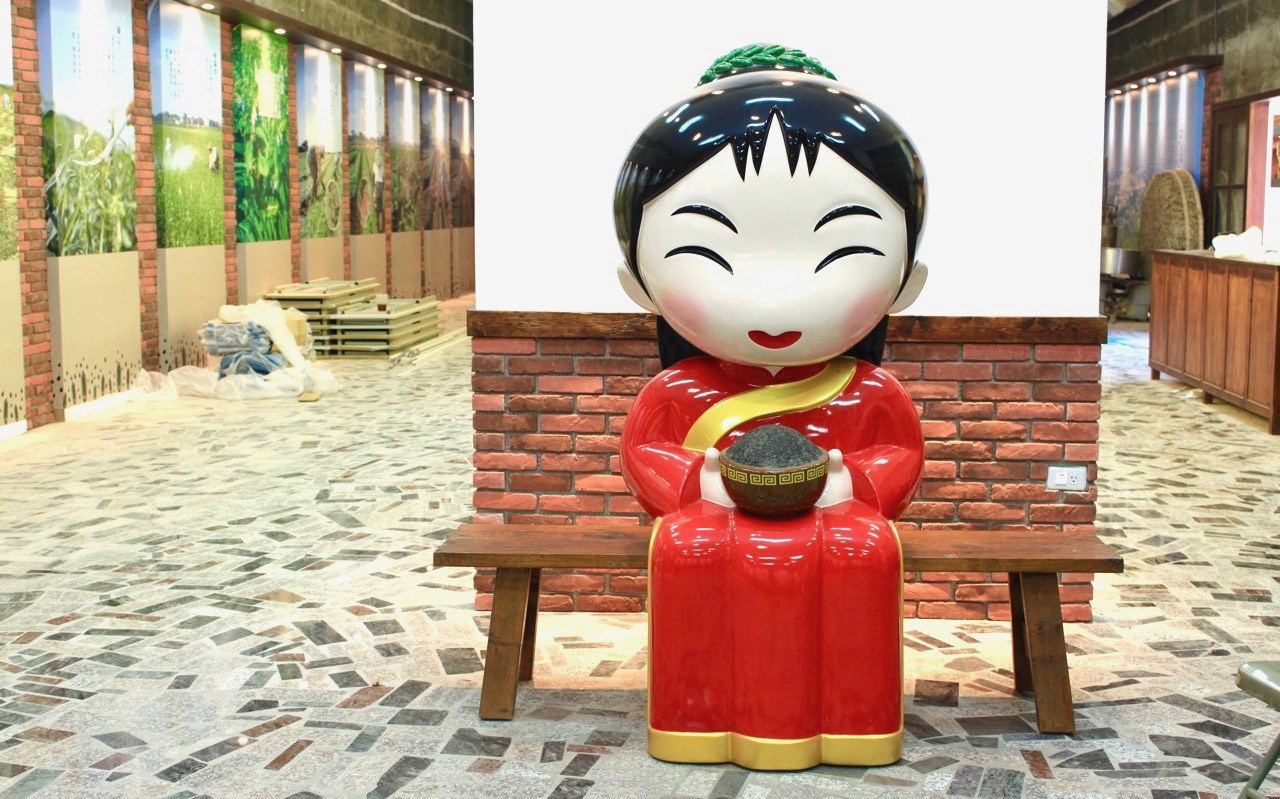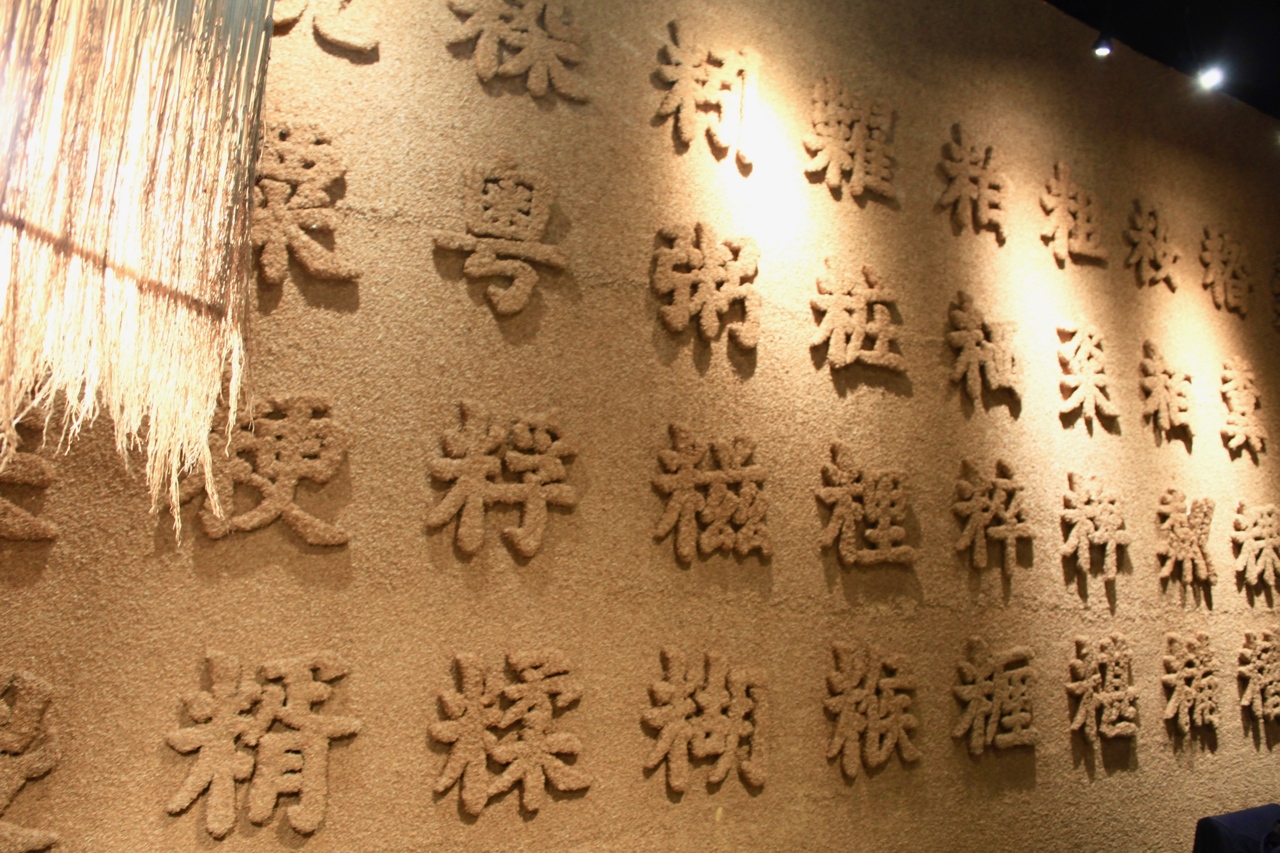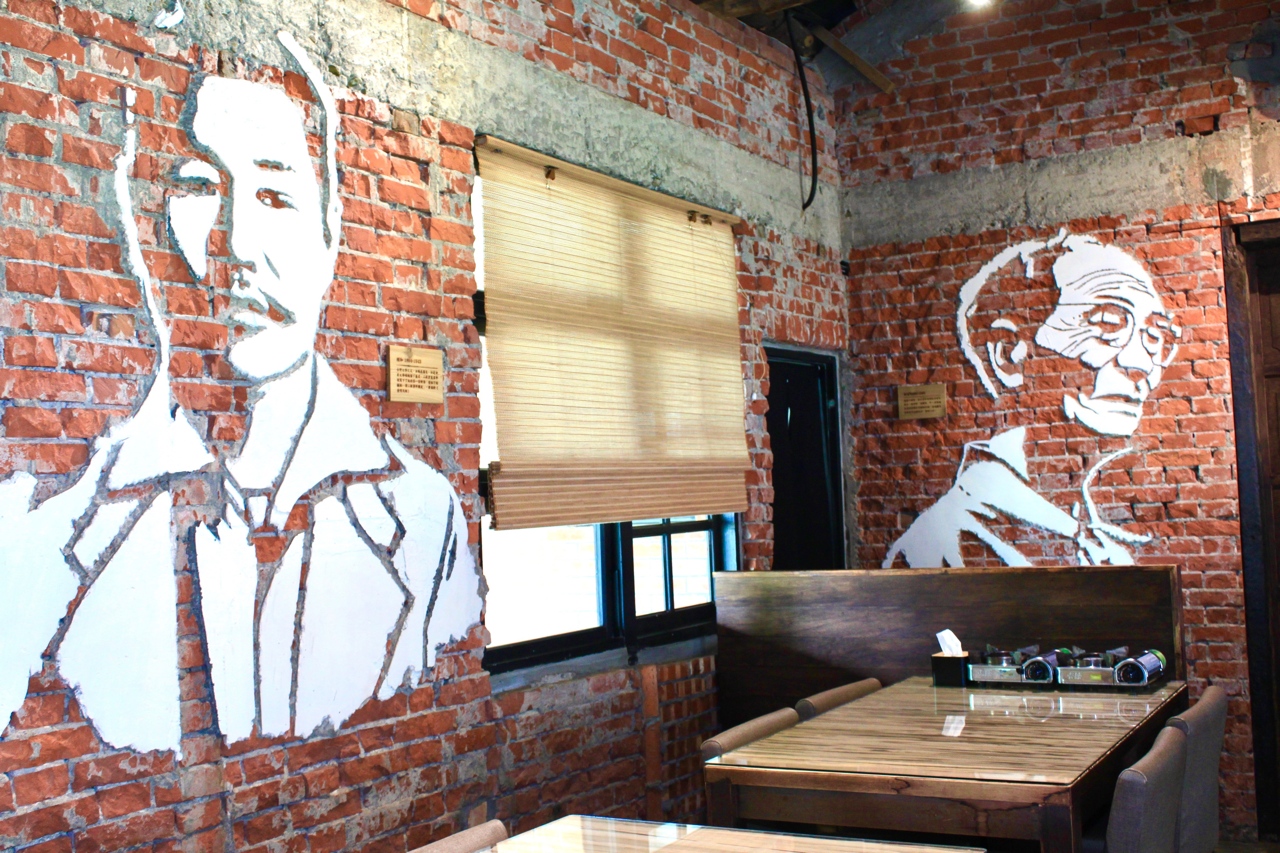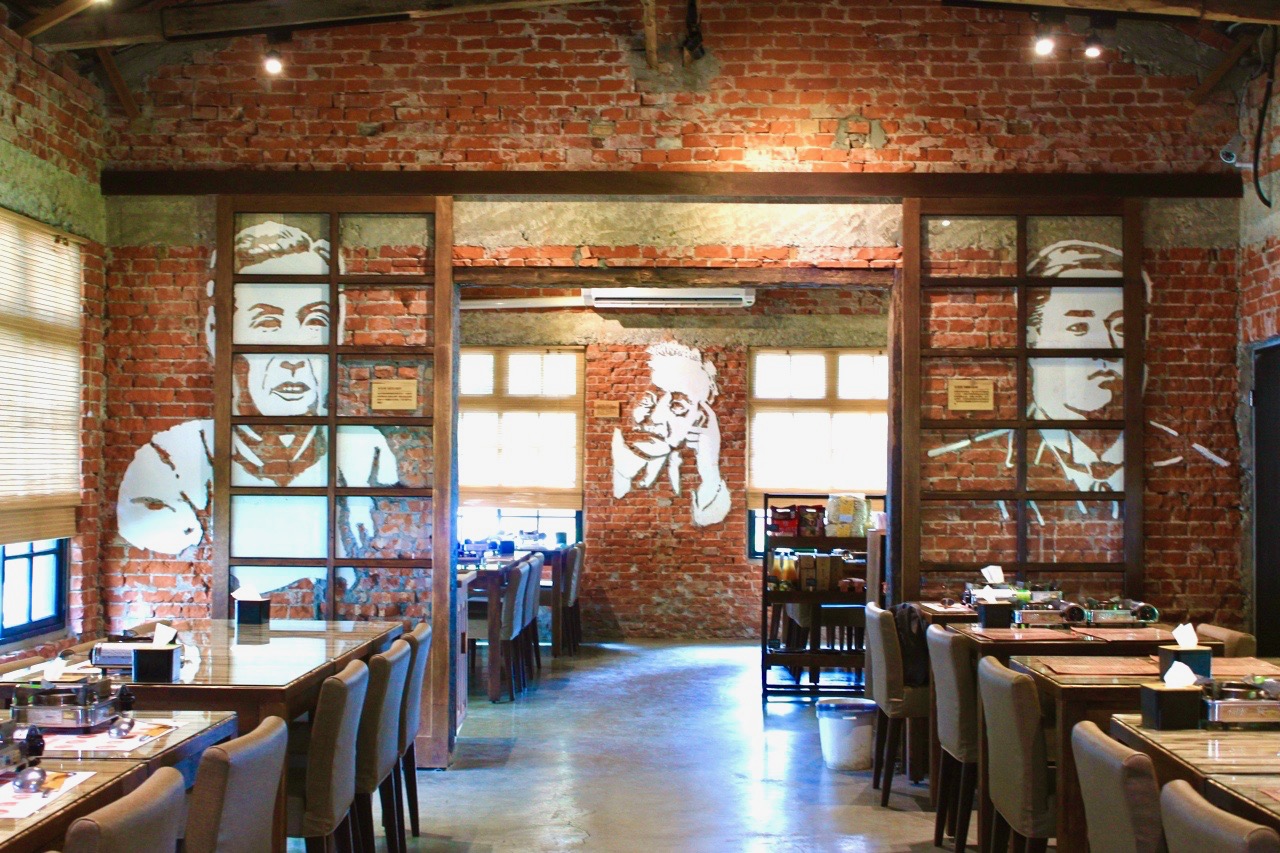The most difficult restaurant in Tainan is this way! The old house of the barn sugar factory was transformed into a trendy restaurant, and Li Han lit up his hometown Xigang with his design.
0 sharing
"my next door passed by my house every day dressed up in plain Assang. When I asked her why she was so dressed up, she said,'I'm going to go to this restaurant and invite Ruan's son-in-law to have a meal!' At that moment, I felt so moved. The barn restaurant seemed to be recognized by everyone. "
Middle-aged uncle Li Hanyeng said sincerely that there was an ancient vertebra that did not fit his age in his smile, and his dark, sturdy body looked like a farmer, but he was a designer who spent most of his life sitting in front of a computer. With his design, he increased the sales of Mango Pudding in Yujing 20-fold, and made the milkfish at the north gate and the burdock of the general more well known. However, the biggest change is his hometown, Tainan Xigang.
.jpg)
.jpg)
Li Han put his design power into the barn restaurant to make his hometown Xigang famous. (photo / Yang Yuyun) I don't know the oil price. I don't know anything about the specialties of my hometown.
Donggang, Nangang and Beigang are all well-known, but when it comes to Xigang, it takes a lot of effort to find it on the map. This small village is the largest producer of sesame in Taiwan. However, when it comes to "the largest", it only accounts for as much as "sesame" in Taiwan's demand. The self-sufficiency rate of sesame consumption in Taiwan is extremely low, and 98% are imported.
As a miscellaneous grain for rice rotation, sesame is a labor-consuming crop. Thinning, coring, harvesting, baling, threshing and removing impurities all have to be done manually, coupled with the high cost of land, making the price unable to compete with imported sesame. 40-60 yuan per kilogram is the average import price, but sesame produced in Taiwan costs 150 yuan.
Growing up eating sesame oil and sesame paste, Li Han, a native of Xigang, had no idea that "Didi is hard." He likes painting and has entered the design industry since graduating from Changrong Middle School in art engineering. He has never changed his profession all his life. His "Fu Cheng Light shoes" clip has won the top ten cultural products in Tainan. In addition, Houbi Township Fushen Haomi has also won the top 100 boutique awards of the Council of Agriculture.
After setting up a personal studio, Li Han lived in downtown Tainan for a long time in order to facilitate receiving cases, discussing with customers, and running to the printing factory. Xigang, which is only a 20-minute drive away, has no sense of existence like stars sheltered by the city's light.
Through the design case to re-understand the hometown flax sister-in-law selection the deepest feeling
About 15 years ago, the Xigang Peasants' Association planned to promote the sesame industry and commissioned Li Han to design posters and DM. Only then did he have the opportunity to walk into sesame fields, visit farmers and oil factories, and learn about the journey from a seed to a bottle of sesame oil. "it turned out to be such hard work." Li Han felt ashamed because he was so ignorant of the specialties of his hometown that he began to think about what he could do for his hometown.
Before that, Li Han had helped Guantian Lingjiao make a micro film "Happiness of my hometown". He brought his photography team to Xigang to write and direct the microfilm "meet". At the same time, he helped the Xigang District Public Office to plan a special book on food, helped the farmers' association plan the sesame oil festival, and had more and more ties with his hometown.
"the first time I felt that design was powerful, it was an activity of selecting 'flax sister-in-law'." Li Hanyeng said that during the Sesame Oil Festival, they hold beauty contests, but this "beauty" has conditions: only mothers-in-law who grow their own sesame seeds or know the sesame industry can run. Finally, the selected sesame sister-in-law was transformed by Li Han into an amiable logo and became the brand of Xigang sesame oil.


"Sister flax" is really a real person. Li Han made her image lovable and became the brand logo of Xigang sesame oil. (photography / Yang Yuyun)
Xigang has a long history of producing flaxseed oil, but the image of the product was not established until the products of the peasant association were printed with "Sister Sister of Sesame" in the packaging and label. Li Hanyeng said: "at that time, people finally had a feeling of having a card, as if they had dressed it up and were able to go out to meet guests."
A good design can produce cohesive power. After more than ten years of product packaging and visual design, Li Hanyi finally realized it.
Take over the decoration of the barn restaurant on your own.
Because of its close ties with the Xigang Peasants' Association, when the team at the current site of the barn restaurant was poorly managed five years ago, the peasant association knew that Li Han's family had been in the catering business for a long time, so they asked him to take over.
At first, it was really reluctant to take over the restaurant. "where are the guests from Xigang? isn't it a testament to the failure of others?" Li Hanyi said, "I am actually very conservative, but I am not very good at rejecting others." Have no choice but to play with a hard scalp.
Since there was no money, he had to DIY everything. He used the designer's ingenuity to use the original function of the building "barn" as an idea. He bought rice husks from farmers, mixed white glue and pasted them on the walls. At the same time, he used Poly Lilong to cut dozens of Chinese characters with "rice" in their strokes, which were also glued to rice husks and affixed to a whole wall, turning them into special rice walls. The chandelier is an expensive millet (material for brooms) planted in the Yongle community, and the screen comes from the Maoxing mat factory in Guilin (the only mat factory in Taiwan). All kinds of ingenious achievements have both local significance and amazing space design.


Giving full play to the designer's ingenuity, Li Han created the local flavor of the barn restaurant. (photography / Yang Yuyun)
Li Han is in charge of interior decoration, while catering is entirely in charge of his wife, Shi Cairong. Because Xigang's specialty is sesame oil, Shi Cairong wants to focus on sesame oil chicken, but after considering the difficulties of the choice of chef and the time to prepare meals, she has a whim: "Why not let the guests do it themselves?" This idea was later well received, originally only providing chopsticks, or guests suggested that she prepare a small shovel to increase the fun of "stir-frying". Stir-fry chicken in a small pottery pot, stir-dried ginger slices, and then add stock and ingredients, foreign guests do it themselves, also feel new. "and you have only yourself to blame for the bad stir-fry, and there is no cook to blame." Li Han laughed and said it was a "thief" strategy.
The barn restaurant became an instant hit. Only three months after its opening, Li Han knew there should be nothing wrong with the business. Except for occasional seats available for dinner, lunch is bound to turn into a corner if it is not booked in advance. Acquaintances often call him to ask him for the "Joe" seat, but he can't help him.


Do-it-yourself fried sesame oil chicken is a characteristic of Li Han's restaurant. (photo / Yang Yuyun) because of the original words, he is determined to take over the old house of the sugar factory and open a "hall restaurant".
However, Li Han stressed that the barn restaurant was an "investment" for him. He left it to his wife to run it, but he still stayed in the bank and did the design work he liked. At that time, restaurant staff Xu Yuxiang and Lin Yijun and his wife mentioned to him that an old house in Shanhua was being invited for tender to open a second restaurant, but Li Hanyeng was not interested.
It just so happens that the Tainan gallery built by Japanese architect Shigeru Ban is about to be completed. Shigeru Sakaka invited the artistic director of MUJI, Yoshiya Hara, to visit and arranged for him to hold a speech for the designer in Tainan. Li Han admired Yuan Yanya very much in the first place. After reading his works, he was no stranger to his concepts such as local land, land sales, and local creation, but no matter how much he read, it would be better to sit under the podium and listen to the master's personal call: "designers, go to the countryside to help farmers and attract urban people to the countryside."
It is such a sentence that Li Han is determined to take over the old office and dormitory of Shanhua Sugar Factory. For him, the "lounge restaurant" is not an investment, but the responsibility of the designer.
It's just that the old house in Shanhua Sugar Factory is in poor condition, and the concrete walls are full of wall cancer, and the masons say they have to be wiped out. Considering the cost of decoration, Li Han gave full play to the designer's ingenuity again. He went into the library for a few days and found portraits of 16 Japanese and Taiwanese who built, operated, or criticized sugar factories, and painted them on the wall. Then according to the paintbrush, the concrete walls outside the portraits were knocked off, exposing red bricks, and the portraits were painted with white paint to create a sense of beauty.


The portraits of Lai he and Yang Kui (left to right) by Taiwanese writers have become a clever idea for the design of the dining hall. (photography / Yang Yuyun)
In this way, it not only deals with wall cancer, but also creates a design with local specificity. Because there are not as many seats as the barn restaurant, the "lounge restaurant" has been hard to find since it opened, and has been rated as "the most difficult restaurant in Tainan" by netizens.
When Zheng Shengwen, deputy director of Shanhua Branch, worked as a police officer in the sugar factory, he lived in the dormitory at the present site of the dining room. He told Li Han how the interior furniture was arranged, and that the magnolia outside was planted by his wife. Now, whenever he brings guests to the restaurant, Zheng Shengwen will designate a seat by the window. "the magnolia noodle was planted by my wife" has become the best topic for him and his guests after dinner.
"I really think the power of design is great to try my best to preserve such a memory." Li Hanqian stressed again.

- Prev

Pingtung Banana Flash Pacific Department Store has become a "banana spot" with stable income in diversified marketing.
Bananas are the main agricultural products in Taiwan, while Pingtung is located at the southernmost tip of Taiwan, with plenty of sunshine and the best production conditions. coupled with farmers' skillful planting skills, bananas can be harvested all year round, making them the main producing areas of bananas in Taiwan. Bananas are in production these days.
- Next

A model of social enterprises in series catering industry chain
A model of social enterprises in series catering industry chain
Related
- A course of planting techniques and methods on how to grow carrots
- How to plant the latest tulips?
- Is it better to pick tea in the morning or in the afternoon? When is the best time for tea to be picked? what is the third or fifth tea?
- Launch Yuanxiao Happy combination Haocha + Tea Yuan healthy Taste
- Penghu Tourism "Fireworks 20 Parade with You"
- 2022 West Lake Happiness holds "Digital Revitalization Voucher" and draws iphone13 and laptop.
- Banqiao Fuzhou social houses are designed to change start-up combined with police elimination to create a safe and livable environment
- The convenient measure of "mechanical weeding" in Xinbei has been abused and the Agriculture Bureau has imposed heavy penalties on the illegal land consolidation.
- Changgeng University Joins Hands with Four Memory Factories to Rescue Memory Talent Shortage
- The list of Taiwan's top 100 MVP managers is listed by the Director-General of the Farmers' Association of Sanxia District.

